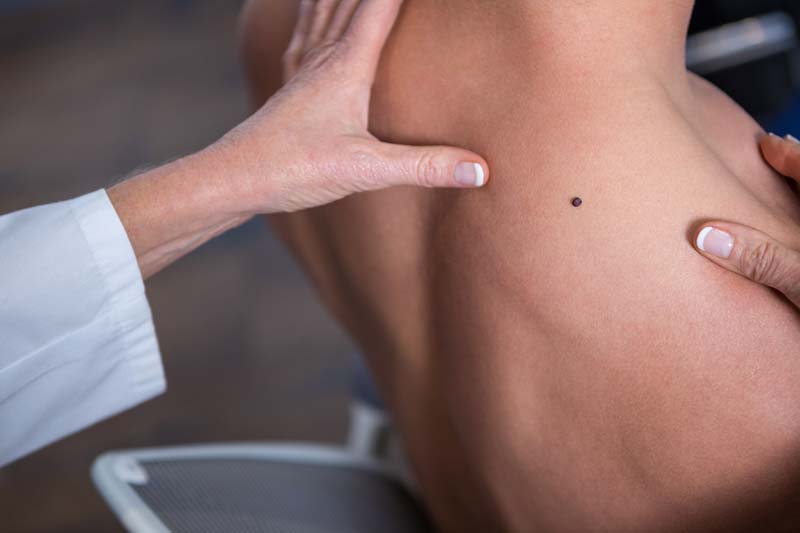 Mohs micrographic surgery is a highly specialized technique that removes skin cancer with the highest skin rate. Developed by Dr. Frederic Mohs in the 1930s, it has been modernized over time to remove only cancerous areas and preserve healthy skin. Mohs uses microscopic examination and specialized marking to treat skin on the face, hands, and ears, and minimize scarring.
Mohs micrographic surgery is a highly specialized technique that removes skin cancer with the highest skin rate. Developed by Dr. Frederic Mohs in the 1930s, it has been modernized over time to remove only cancerous areas and preserve healthy skin. Mohs uses microscopic examination and specialized marking to treat skin on the face, hands, and ears, and minimize scarring.
We perform this surgical procedure through the following steps:
Step 1: Biopsy Site Confirmation
First, we identify your biopsy site. Even if the skin healed over the cancerous spot, cancer roots can extend below the surface. When not treated, they continue to grow and can require more extensive surgery when they finally resurface.
Step 2: Local Anesthesia
We then numb the biopsy site with local anesthesia. You may feel a mild pinch and sting, but you will not experience further discomfort because your nerves will fall asleep.
Step 3: Layer One
Our team will remove a small pancake of skin around the biopsy site, which we will mark and precisely color before sending to our lab to be processed. We will then place a temporary bandage over the treated site and escort you to our comfortable waiting room to rest and enjoy yourself while we process the skin sample. Processing typically lasts an hour, so please prepare for this wait time in advance.
Step 4: Analysis
After the sample has been processed, our doctors will examine it under a microscope for any remaining cancer roots. If he identifies a cancer root, we will bring you back to the treatment room to extract a second skin sample. If no roots are found in the second layer, our dermatologist will present you with reconstruction options.
Step 5: Layer Two
If a second sample needs to be extracted, we will apply additional numbing medicine and remove a small piece of skin that corresponds only to the localized cancer root. Like the first, this sample will be marked, colored precisely, and brought to the lab to be processed. Our team will then rebandage the treated area and bring you back to the waiting area for another hour or so.
Step 6: Analysis
After the skin is processed, doctors will examine the edges for cancer roots. If roots are detected, we will repeat the layer process and perform another analysis. Cancers are often removed in a single layer, though they may sometimes extend further than anticipated. For this reason, we ask that you keep your entire day free.
Step 7: Reconstruction
Following the removal of your cancer, our trained professionals will meet with you to discuss your reconstruction options, which will depend on the size and location of your surgical area. Some wounds can be allowed to heal naturally, while others may need to be stitched directly. If needed, we will create a skin flap or borrow skin from another area of your body to perform a skin graft. Our trained professionals will explain the benefits and setbacks of each option and work with you to determine the best option for your surgical site.
Step 8: Wound Care
Once we have completed the reconstruction procedure, we will bandage the area and provide you with detailed instructions to help you care for your surgical wound. We will also schedule a follow-up visit in 1-2 weeks to ensure the site is healing properly.
You are welcome to contact Dermatology & Plastic Surgery Specialists at 760-773-6616 today if you are interested in learning more about mohs micrographic surgery in Palm Desert, California. We would be pleased to arrange your appointment with our skilled dermatologist.
